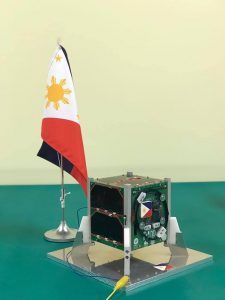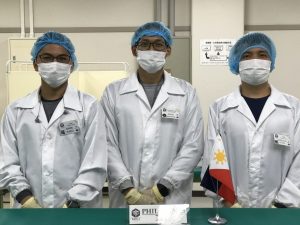 (FEB. 26)—Maya-2, the second cube satellite (cubesat) designed and developed by Filipino scholars has arrived at the International Space Station (ISS) following a successful launch earlier this week.
(FEB. 26)—Maya-2, the second cube satellite (cubesat) designed and developed by Filipino scholars has arrived at the International Space Station (ISS) following a successful launch earlier this week.
The ISS received Cygnus NG-15 (S.S. Katherine Johnson)—the rocket carrying Maya-2—on Feb. 22, 5:38 p.m. Philippine Time (PHT). Cygnus NG-15 was launched on Feb. 21 from the National Aeronautics and Space Administration (NASA)’s Wallpos Island flight facility in Virginia, USA.
From there, the 1.3-kg cube-shaped Maya-2 will be released into orbit and will travel around the earth daily, primarily taking pictures/images of the earth but also relay information such as weather station telemetry and emergency announcements in the area it may happen to be passing over.
Maya-2 was designed and developed by Mark Angelo Purio, Izrael Zenar Bautista, and Marloun Sejera, Filipino scholars who were sent to Kyutech through the Space Science and Technology Proliferation through University Partnerships Project of the Space Technology and Applications Mastery, Innovation and Advancement (STAMINA4Space) Program.
Maya-2 was launched with two other identical cubesats from Japan (named Tsuru) and Paraguay (named GuaraniSat-1). All three were developed under the Kyushu Institute of Technology (Kyutech)’s 4th Joint Global Multi-Nation Birds Satellite (BIRDS-4) Project.
 According to NASA, BIRDS-4 is the “continuation of an international small satellite development project under a strategic partnership agreement between Kyutech and the Japan Aerospace and Exploration Agency.”
According to NASA, BIRDS-4 is the “continuation of an international small satellite development project under a strategic partnership agreement between Kyutech and the Japan Aerospace and Exploration Agency.”
“The mission of the BIRDS-4 satellites is to test commercial off-the-shelf components, as well as new technologies such as Perovskite solar cell and antenna using the satellite structure to prove their worthiness in space,” the agency added.
STAMINA4Space is funded by the Department of Science and Technology (DOST), monitored by DOST’s Philippine Council for Innovation, Energy, and Emerging Technology Research and Development (DOST-PCIEERD), and implemented by DOST’s Advanced Science and Technology Institute (DOST-ASTI) and UP Diliman (UPD).
